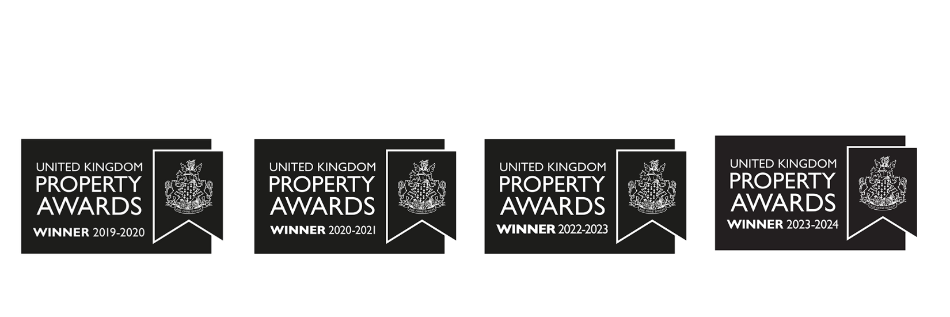Whether you are getting started in the investment world, or you would like to know more about which style is best for you, read on to discover the benefits of Furnished Holiday Lettings, and one in particular that could help you kickstart your financial freedom today.
All Hail Hayle, The Cornish Beauty Spot Offering Stunning Views and Returns
Situated on the opposite side of St Ives Bay, Hayle is famed for its three miles of golden sand. The beaches start at the mouth of the estuary, which is regarded as an international quality bird-watching spot. The various award winning beaches and spectacular surfing means that this part of the world is a popular destination for holidaymakers looking to escape to the British Riviera. As a buy-to-let investor, you may be wondering what will be of interest to you here. The FHL market (that is the Furnished Holiday Let market), is very lucrative. Not only does it offer great returns, but it has the added advantage of tax incentives that allow you to claw back expenditure you have incurred, and much more. Add to that the ability to use it for you and your family and it starts to become apparent that an FHL is and ideal choice when looking to add to your portfolio.
What is a Furnished Holiday Let?
An FHL, is a certain type of rental property classification in the UK and Ireland (and other European countries). This classification provides certain tax advantages to holiday let owners. There are specific requirements a property needs to meet in order to be classed as an FHL, such as its availability, actual bookings and level of furnishings, but that said varies little to what many buy-to-let investors offer when letting out on standard AST’s.
The Tax Advantages
Firstly you can offset the cost of your furnishings against pre-tax profits, something you are unable to do with a standard long term let. For more details on Capital Allowance, click here.
Secondly, another key advantage over and above standard rental properties is that when you come to sell an FHL you are able to claim certain CGT relief. There are several types you can apply for and they are under the headings, Roll-over relief, Entrepreneur’s relief and lastly Hold-over relief. There is also another very useful feature with this type of rental and that is you can divide the income earned from it in any fashion you wish with your husband or wife. Whether that is 50/50 or any other combination to maximise the tax advantage from the income earned. This is very different from standard rental properties where the income can only be divided according to the ownership. For more on this, see here. There is more, say goodbye to council tax! A self-catering accommodation which is available for short-term lettings for more than 140 days in any given year, is subject to Business Rate property tax. Since all FHL properties must be available to let for a minimum of 210 days, they fall into this category. However, this isn’t necessarily bad news as you can claim Small Business Rate Relief, which can be up to 100% (dependent on what area you are in). Therefore, goodbye to council tax! For more on this, click here.
What Are the Disadvantages of a Holiday Let?
Well, there are a few, but as you will see these are minor relative to the advantages gained. Firstly, there is VAT. If your turnover from your FHL property portfolio exceeds the VAT threshold, you will need to become VAT registered. If you own an individual FHL property, to exceed the current VAT threshold you will need to let your property for over £1,500pw, for the entire year (52 back-to-back bookings). Be sure to do the maths, but you’ll most likely need multiple FHL properties before VAT becomes something you would need to consider.
If you run a separate business and are a VAT registered individual, your FHL property income may be subject to VAT also. For more information, head here.
Now you need to know what qualifies as a Furnished Holiday Let and what you need to do to achieve this. First off, and very obvious from the name, your property must be furnished! To what level is pretty much common sense, in that you have to equip it for people to live there, however, a good holiday letting company will happily advise you on what is actually needed. Secondly, the property has to be offered for rent at least 210 days per year, and let for at least 105. If the property is let by family or friends this does not count. There can be some flexibility should you struggle to achieve the minimum numbers. Firstly there is the possibility that you can average out using other properties in your portfolio, or alternatively, there is the possibility that if you achieved the figures in previous years then there is a 2-year grace period, as long as you achieve the figures going forward, that way you can retain FHL status.
So what do we expect to see in the way of returns? Statistics show that a good holiday let will earn more in 6-8 weeks than the same home being rent out on a long-term rental period would achieve in a year. To an investor this is now beginning to look very attractive, and although a holiday let will not be fully occupied all year it doesn’t take much to better the returns achieved through conventional models. In addition, you have the added advantage that wear and tear will be at a minimum with the property occupied for less time. There is the obvious benefit that we alluded to early on, and that’s the ability that you have of using the property yourself, something that the traditional buy-to-let market does not offer. So add all this together and you have a very favourable market in which to operate, and all can be managed using the exclusive Flambard Williams SkyLet™ service that allows you to simply enjoy the benefits of your property without any of the hassle.
Deciding between investing in a house and an apartment? Make sure you’re registered for our upcoming Houses Vs. Apartments Webinar!



